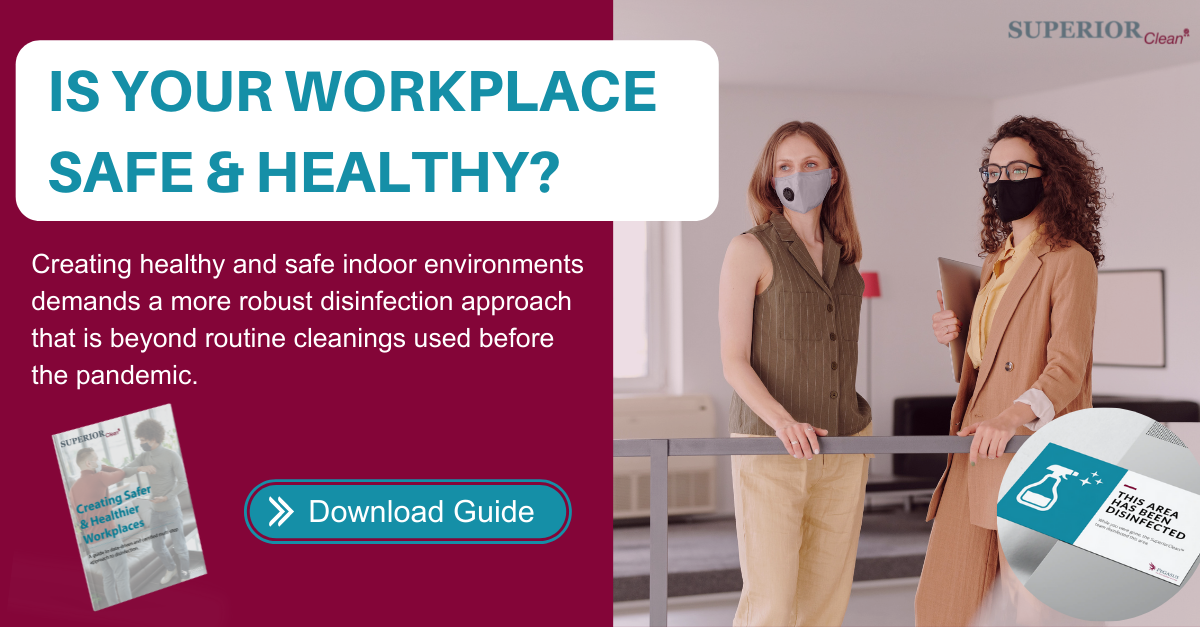The global pandemic has completely transformed the way people live and work. It has brought about a radical change in not just the way employers manage their workforce but also how they upkeep their workspaces as well. As more and more people return to the office under a hybrid work structure, health and safety issues are of the highest priority. Employers and workspace managers are responsible for keeping workers safe in the shared environment. Amidst all the recommendations and the Occupational Health and Safety Act (OSHA) requirements, there are five major Hybrid Workplace Cleaning lessons we learned from the pandemic:
1. Proper hand hygiene is vital
Even though people may not be shaking hands anymore, good hand hygiene is one of the most effective ways to prevent transmission. High-touch surfaces are a great infection hazard in a shared workspace, especially if workers often move in and out of the space or switch between desks. The most common high-touch surfaces include light switches, door handles, handrails, telephones, printers/copiers, toilets, faucets, and drinking fountains. Each of these must be cleaned at least daily and, if possible, multiple times daily.
Consider investing in no-touch equipment like trash cans, faucets, and toilet flush systems. Employers should also provide ample time and resources for workers to wash their hands frequently. Make sure you supply accessible sinks, soap, water, paper towels, and hand dryers. If you cannot provide handwashing stations, ensure that employees use hand sanitizers with at least 60% alcohol.
2. Face coverings help keep co-working spaces healthy
Masks or other face coverings contain the wearer's respiratory droplets and help protect others from infection. They're essential for workplace safety, even if the employees are fully vaccinated. Masks must always have at least two layers of tightly-woven breathable fabric and should not have vents or valves.
Remember that cloth face coverings do not qualify as personal protective equipment. While they may not eliminate the risk of inhaling the COVID-19 virus, they can prevent it from spreading to others. Wearing a mask does not, in any way, reduce the importance of practicing social distancing. If a physical distance of at least 6 feet is not feasible, use transparent shields or other solid barriers to separate individual workstations. Your team may not need to wear masks at their individual workstations, but it could help reduce various illnesses to wear them when getting a larger team together.
3. Ventilation systems play a critical role
Improving ventilation and air filtration in the workplace is essential for limiting transmission. Consult with an HVAC professional to increase total airflow supply to occupied spaces. As much as possible, try to increase the percentage of outdoor air in the workspace. Consider using natural ventilation if it is compatible with the HVAC system's temperature and humidity controls. If diluting indoor air with direct outdoor air is impossible, consider disabling the demand-control ventilation (DCV) controls that reduce air supply.
You should also take steps to increase air filtration and minimize filter bypass. Consider using high-efficiency particulate air (HEPA) filtration systems to improve air quality in the workspace. If you can revise the design airflow, aim to establish pressure differentials by generating clean-to-less-clean air movements. To kill potential airborne viruses, you can also use ultraviolet germicidal irradiation (UVGI).
4. Risk and hazard assessments are necessary
Although the risk of infection varies by industry, some basic hazard assessment strategies are needed to protect workers across all sectors. The first step is to screen all workers and visitors who enter the workplace. You could use question-based screening, non-touch temperature sensors, or rapid antigen tests to evaluate symptoms and exposure.
As a guiding principle, employers should encourage employees to stay home if they are not well. Conducting daily in-person or virtual health checks is an excellent way to boost engagement and assess risk factors. Together with a robust response plan for any potential infections, this data filing can go a long way toward protecting employees.
5. Routine disinfection is essential
The pandemic has profoundly highlighted the importance of routine cleaning and disinfection in the workplace. Even the regular influenza virus can survive on hard surfaces for 2-8 hours and infect people who come in contact with it. The CDC notes that if there have been no confirmed or suspected COVID-19 cases in the space, thorough cleaning once a day is usually enough to protect employees. Frequent decontamination is necessary if the space is a high-traffic area, poorly ventilated, or does not provide access to handwashing or hand sanitizers.
Pegasus Building Services delivers high-quality, innovative cleaning services to ensure peace of mind for all building occupants. With comprehensive cleaning and decontamination solutions, Pegasus goes above and beyond routine disinfection used before the pandemic. We offer the full range of janitorial and maintenance services together with cutting-edge techniques like Hydrogen Peroxide (H2O2) fogging for critical environments. To learn more about Pegasus services and solutions, get in touch with us and request a free, no-obligation service quote today!





